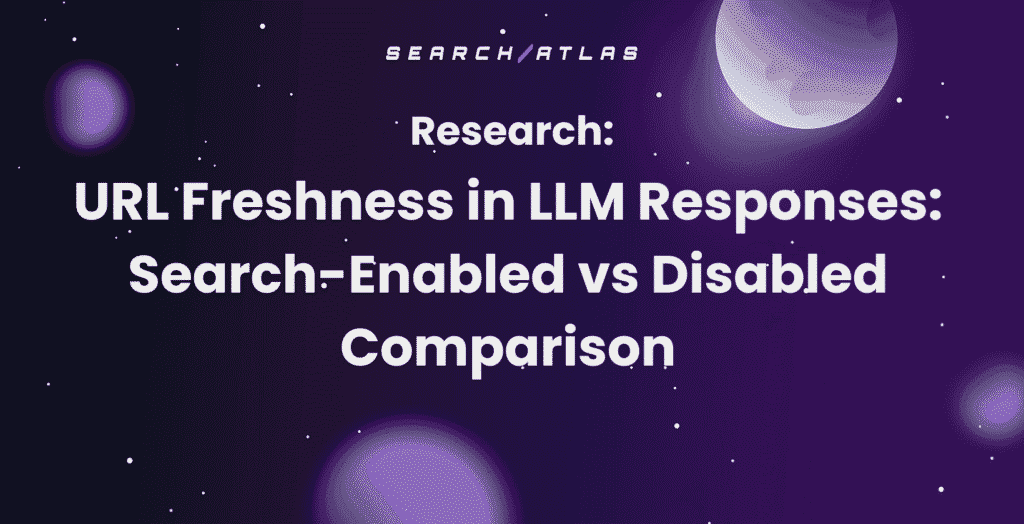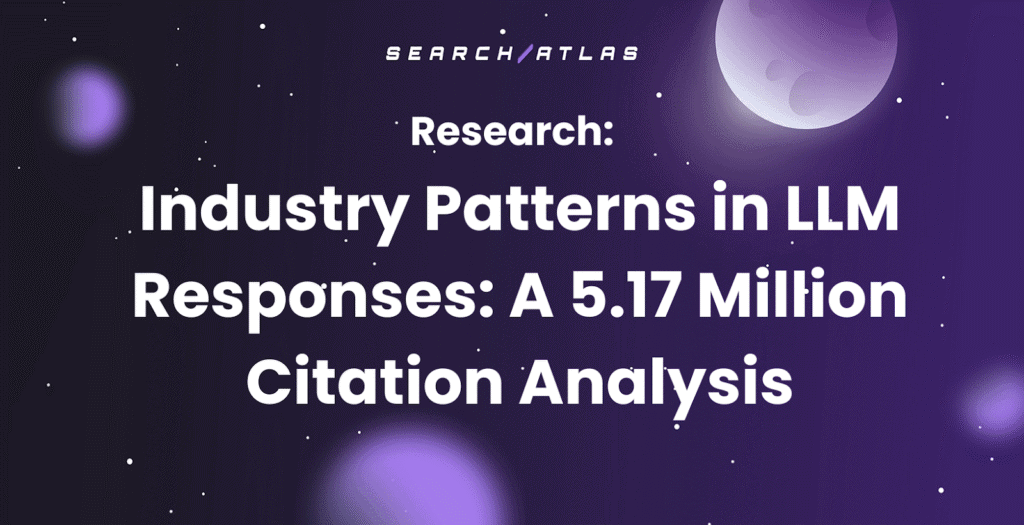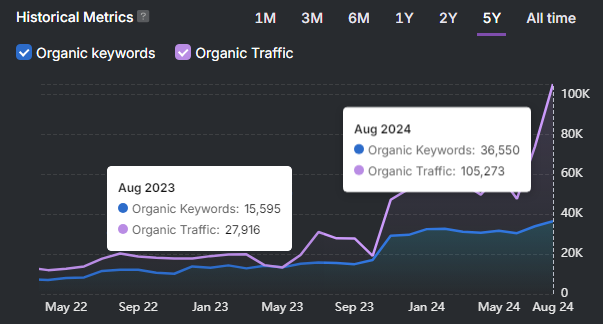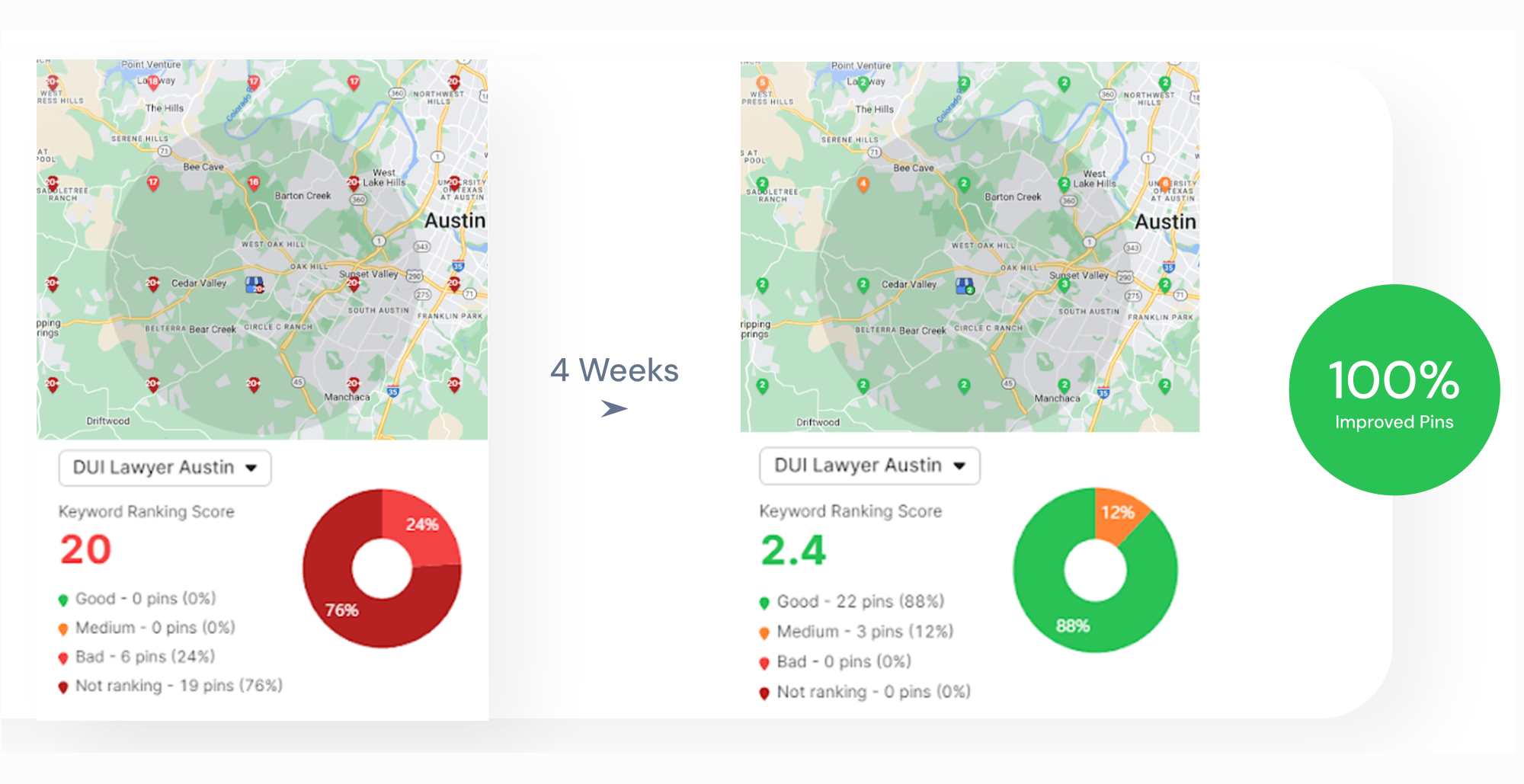In SEO, building a website’s authority and credibility is like building trust in real life: You need to get Google and the users to rely on you and, in this case, boost organic traffic. That’s where Majestic’s “Trust Flow” comes in.
Trust Flow works alongside another metric called Citation Flow, both introduced by Majestic back in 2012. While Trust Flow focuses on the quality of backlinks, Citation Flow measures the quantity.
By using backlink tools, you can check these metrics and figure out how trustworthy a website is based on the links pointing to it. 👈
For instance, a neighborhood bakery might have high Trust Flow if it’s featured in top-tier food blogs, whereas a gossip site could score high Citation Flow just from sheer volume.
Want to dive deeper into these concepts? We’ll break down these metrics, what Trust Flow and Citation Flow mean, how they’re calculated, and whether there’s a better metric to rely on. Let’s jump right in! 👎

What is Trust Flow?
Trust Flow (TF) is a metric developed by Majestic to measure how trustworthy a website is based on the quality of its backlinks. It’s scored from 0 to 100, with higher scores indicating stronger trust signals.
The score analyzes how closely a site is linked to a group of highly trusted “seed sites.” The closer your backlinks are to these seed sites, the higher your Trust Flow.
For instance, a blog cited by reputable news outlets might see a strong Trust Flow score, while one linked by questionable or spammy sites might score lower. That means websites like Google and Adobe typically have high Trust Flow.
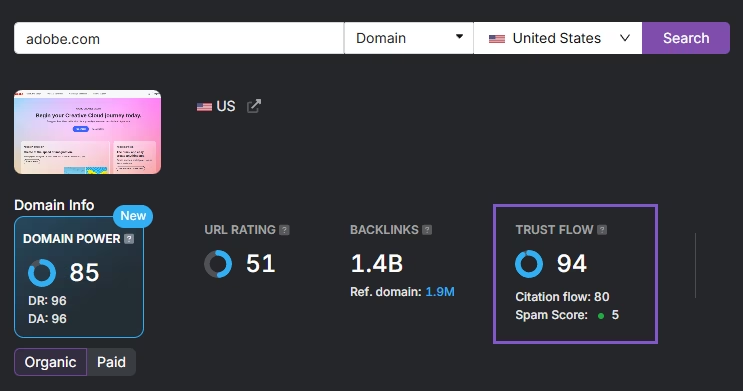
On the other hand, newly created sites with few or no backlinks tend to have low scores. Most websites fall somewhere in the middle.
While Trust Flow isn’t a Google ranking factor, it’s a helpful off-page SEO tool for evaluating the quality of your backlinks. This helps you with competitor analysis and to create an in-depth link building strategy.
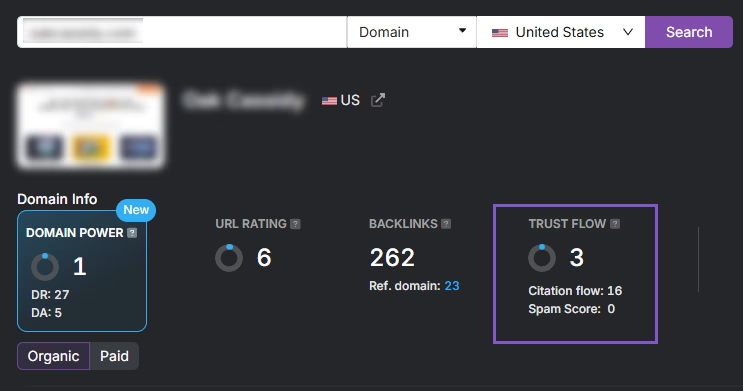
Used alongside other metrics, it can provide valuable insights into your SEO performance.
How Is Trust Flow Calculated?
The exact formula behind the calculation is a closely guarded secret by Majestic. 😶
What we do know is that Trust Flow is based on a curated list of trusted sites reviewed by real people, like developers, writers, and editors. It makes it harder to game the system with shady SEO tactics.
Trust Flow focuses on the quality of backlinks. It analyzes how trust flows through links, both external and internal, and uses an iterative process to pass trust from one page to another.
For example, if a popular tech blog links to your site, it can boost your Trust Flow. Even your own internal links can help spread Trust Flow where it matters most.
While the exact math isn’t available, focusing on building high-quality backlinks and smart internal linking will naturally boost your Trust Flow and your site’s credibility.
What is a Good Trust Flow?
When it comes to Trust Flow, many site owners wonder if their score is “good enough.” In general, websites fall into one of three categories:
- 50 or above: A high level of trust. Sites in this range are viewed as highly credible, similar to YouTube, Yahoo, or TED Talks.
- 10 to 50: An average level of trust. This is where many established websites land, like Reuters, Macy’s, or MSN.
- 10 or below: A very low level of trust. Brand-new sites or those using questionable SEO tactics often fall here.
If your site is scoring above 50, congratulations, you have a strong reputation. You are doing fine if you’re in the 10–50 range. But it’s worth reevaluating your SEO strategy if your score is below 10.
What Is Citation Flow?
Citation Flow (CF) is also a metric that scores a webpage from 0 to 100 based on the quantity and quality of backlinks it receives. While it’s primarily about how many sites are linking to a page, it also considers the link equity (or “link juice”) passed from those sites.
The score depends on:
- The number and quality of links pointing to the webpage.
- The link equity passed from the referring websites.
The more relevant and high-quality backlinks a webpage has, the higher its Citation Flow. However, it’s important to remember that Citation Flow doesn’t assess the trustworthiness of those links—just their volume and perceived value.
Google, on the other hand, places greater emphasis on qualitative backlinks, factoring in context, relevance, and overall quality. That’s where the next metric, Trust Flow, plays a key role in complementing Citation Flow.
How is Citation Flow Calculated?
Citation Flow is a metric from 0 to 100 that estimates a site’s authority based on the quantity and link equity of its backlinks. Here are the factors that influence it:
- Backlink Quantity: Citation Flow starts by counting the total number of backlinks pointing to a site or page.
- Backlink Quality: Higher authority backlinks contribute more to the score, while low-quality links have less impact.
- Link Equity Distribution: The value of a backlink depends on how many other links share its equity. Fewer outgoing links on a high-authority page result in more equity passed.
- Iterative Flow: Authority flows not just from direct links but also through indirect links across the network.
- URL and Domain Levels: Scores are calculated for individual pages and aggregated for entire domains.
Citation Flow focuses on link volume and equity, not trustworthiness, making it most effective when paired with Trust Flow for a complete backlink analysis.
What Is a Good Citation Flow?
There’s no single “good” Citation Flow score to aim for and the metric should be viewed alongside Trust Flow.
Ideally, you want a balanced Citation Flow-to-Trust Flow (CF-to-TF) ratio, close to 1:1. This means every backlink is trustworthy.
For example, if the Citation Flow is double the Trust Flow, it suggests many links may be lower quality.
On the other hand, if your Trust Flow is higher than Citation Flow, that means your links are higher quality but fewer in number. A higher Trust Flow relative to Citation Flow is better.
Citation Flow vs Trust Flow
Simply put, Citation Flow (CF) measures the quantity of links pointing to your site, while Trust Flow (TF) measures the quality of those links. Both scores range from 0 to 100, but keep in mind that neither CF nor TF is a direct ranking factor for Google—they’re more like indicators to help you assess your SEO performance.
Think of it like this: Imagine a scientist being praised for their work because many other scientists reference it. But just because many scientists cite them doesn’t mean they’re trustworthy, some might be unreliable.
That’s where Trust Flow comes in. It evaluates the credibility of the sources citing the scientist, ensuring that the recognition is deserved.
A high Citation Flow paired with high Trust Flow means your site is linked to by reputable sources like Forbes or Reuters, signaling that your site is both popular and trustworthy.
Why You Can’t Rely on Trust Flow and Citation Flow for Accurate Metrics
It’s important to note that while metrics like Trust Flow and Citation Flow can provide valuable insights into a site’s SEO health, they can also be easily manipulated, especially Citation Flow.
How Citation Flow Is Manipulated
Since Citation Flow is mainly focused on the volume of backlinks a site receives, it’s easier to artificially inflate a site’s score by acquiring large quantities of low-quality links from spammy sites, directories, or irrelevant sources.
While this can boost your CF score, it doesn’t reflect the true authority or trustworthiness of the site.
How Trust Flow Can Be Manipulated
Trust Flow is harder to manipulate than Citation Flow, but it’s not immune.
It’s possible to buy backlinks from sites with high Trust Flow scores. But this metric doesn’t measure whether a site drives real traffic or ranks for relevant keywords.
Traffic and rankings are more valuable because they show that a site is not just trustworthy but also relevant and engaging for both Google and users.
Why Website Traffic and Keywords Matter More Than Ever
Legacy Trust Flow and Domain Authority tools are based on old standards that focus too much on backlinks and don’t keep up with how Google’s algorithm has evolved.
Today, authority goes beyond just backlinks. Google has become much smarter, and now two key factors really matter:
- Page Quality: Your content needs to be top-notch. If it doesn’t meet high standards, it won’t rank well.
- Topical Authority: Google wants to see if you’re the go-to source in your niche. If you’re recognized as the authority in your field, you’re in great shape.
Backlinks still play a role, but quality content and being seen as the expert in your industry are now what truly make a difference.
Meet Domain Power: Your New, More Reliable Metric
Domain Power (DP) is a metric created by Search Atlas that combines organic traffic and ranking keywords to offer a reliable measure of a site’s authority. Unlike traditional metrics that focus mainly on backlinks or external signals, DP uses real-world data directly from Google Search Console (GSC).
Its goal is to provide accurate off-page SEO insights, helping you assess link-building opportunities and uncover real value.
As many metrics are manipulated through link farms or spam networks, SEOs have become wary of relying on them. That’s exactly why Domain Power was created. It can’t be manipulated.
How is Domain Power More Reliable than Trust Flow?
Trust Flow (TF) can often feel inconsistent, and sometimes it seems downright unfair.
Let’s take a look at one example: A website with a TF score of 31, ranking for 2.4k organic keywords and receiving 1.7k monthly visitors.
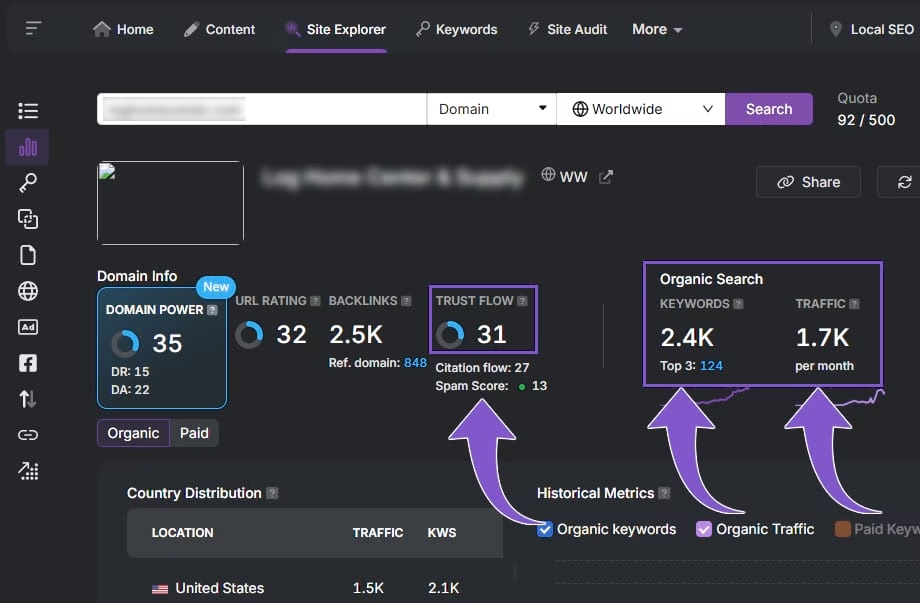
Its TF score seems a fair reflection of its performance. Domain Power gives it a similar score of 35.
Now, consider another site that ranks for 4.4k organic keywords and attracts 1.9k visitors per month.
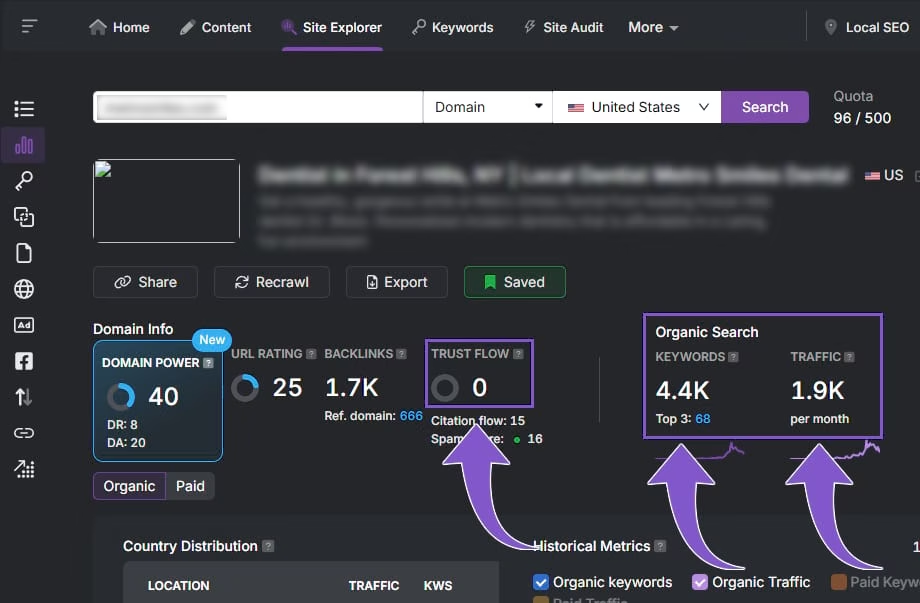
But here’s the surprising part: its TF score is zero. That doesn’t seem to make much sense, right? Why would a site with higher rankings and more traffic have a TF score of zero?
Domain Power gives this site a more accurate score of 40, reflecting its true value and relevance.
This is exactly where Domain Power shines. Instead of just looking at backlinks or external signals, Domain Power takes into account performance metrics that matter for Google, like organic traffic and keyword rankings.
Finally, The Trustworthy Authority Metric You’ve Been Waiting For
Trust Flow tries to be more reliable than other metrics by manually tagging certain websites as “trustworthy.” But building your backlink strategy around Trust Flow isn’t the best move.
Why? It means you’re probably overlooking amazing opportunities from sites that get tons of traffic, rank for loads of keywords, and are loved by users, things Google really cares about today.
Think about it. Plenty of websites rank well and attract real users every day, but they don’t have a high TF score. Why? Maybe they’re not linked to the specific “trusted” sites in Majestic’s database. But does that make them any less valuable for your SEO? Definitely not.
This is where Domain Power comes to the rescue. 🦸
It helps you spot these hidden gems: Websites with strong traffic and keyword rankings that truly matter. That’s what makes Domain Power the go-to metric for finding the best backlink opportunities.
At Search Atlas, we don’t just give you the basics. We offer innovative tools like OTTO, the first AI agent. Curious? Give it a try with our free trial!






